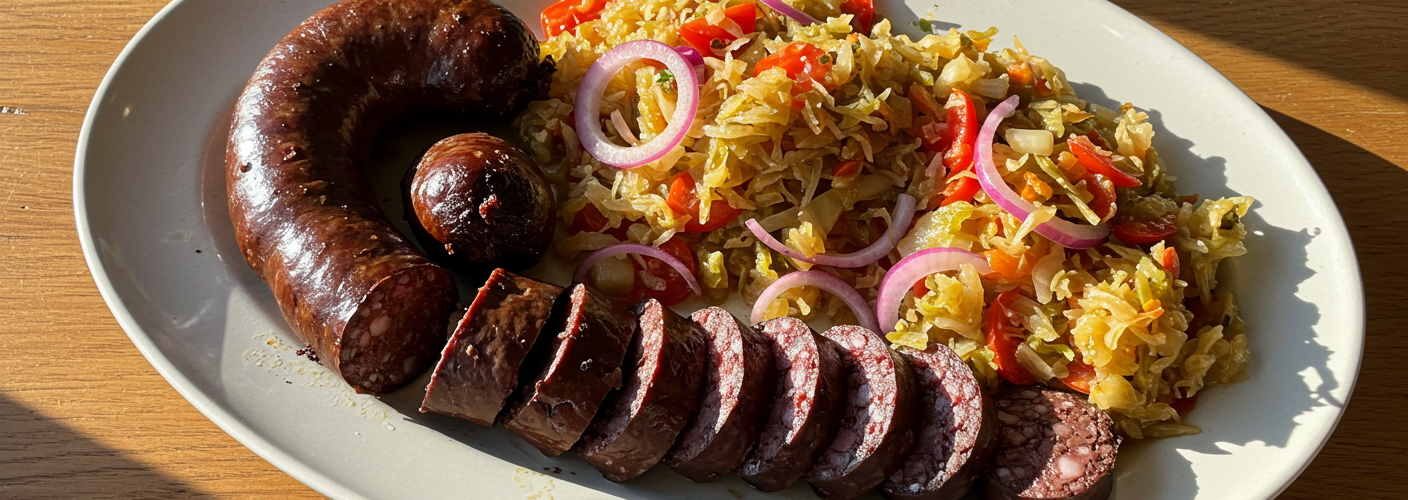Krvavice, the infamous blood sausage, is a culinary delicacy steeped in tradition and history. Originally popularized in various regions of Eastern Europe, this savory dish boasts a unique flavor profile that reflects the cultural tapestry of the places it hails from. While its preparation might raise eyebrows for some, those familiar with krvavice understand that it represents centuries of heritage, a connection to the land, and a celebration of shared meals.
At its core, krvavice is made from a combination of fresh blood—often from pigs or cows—seasoned with a medley of spices and ingredients, which may include rice, barley, or oatmeal. Each region has its own variation, contributing to the rich diversity of this dish. In some parts, you might find the sausages infused with strong flavors from paprika or garlic, while in others, herbs and onions take center stage.
A Cultural Staple
Krvavice has its roots in the resourceful cooking practices of rural communities. Historically, when a butchered animal was prepared for consumption, every part of it was utilized, lest waste occur. Blood, a nutrient-rich ingredient, became a staple, particularly in colder regions where hearty meals were essential for survival. It is believed that blood sausages date back to ancient times, with variations found in numerous cultures across Europe, each having its own distinct flair.
In countries like Poland, Slovenia, and Croatia, krvavice can often be found on the family dinner table. They are commonly enjoyed during festivals, family gatherings, or simple weeknight dinners. Their preparation often involves a communal effort, with family members coming together to craft the sausages, making the process as much about tradition and connection as it is about food.
The Preparation Process
Making krvavice requires skill and attention to detail. The first step involves the careful selection of ingredients, ensuring that only the freshest blood and meats are used. The blood is mixed with the chosen grains and spices, creating a rich mixture that is then stuffed into natural casings. Once tied off and shaped, the sausages are either boiled or smoked, developing their final texture and flavor.
The end product is a deliciously unique sausage that holds a special place in the hearts of those who enjoy it. It can be prepared in various ways: grilled, fried, or even served with a side of sauerkraut or mashed potatoes. Krvavice pairs beautifully with bold flavors, leading to satisfying and filling meals that keep diners coming back for more.
A Culinary Evolution
In recent years, krvavice has seen a resurgence in interest among food enthusiasts and chefs eager to explore traditional dishes. Influenced by the farm-to-table movement, many are now looking to support local producers and celebrate the heritage of their culinary roots. Artisanal producers are reconnecting with traditional methods, celebrating the authenticity that krvavice represents.
These efforts are revitalizing the perception of blood sausage, with innovative pairings and presentations that highlight its unique characteristics without overshadowing the elements that make it a cherished classic. Food festivals, pop-up restaurants, and culinary workshops play a vital role in this renaissance.
Conclusion
Krvavice is not merely a blood sausage; it embodies the essence of cultural heritage, resourcefulness, and community. It is a dish that brings people together, offering both a taste of the past and a canvas for culinary creativity. Whether you enjoy it in a rustic setting or at a modern dining establishment, krvavice remains a timeless dish that continues to thrive in the hearts and kitchens of many across the globe.




Add comment